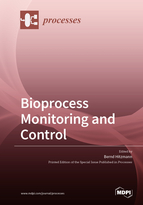Bioprocess Monitoring and Control
A special issue of Processes (ISSN 2227-9717). This special issue belongs to the section "Biological Processes and Systems".
Deadline for manuscript submissions: closed (30 April 2020) | Viewed by 58479
Special Issue Editor
Interests: process analytics; cereal science; modelling; chemometrics; process control; data evaluation
Special Issues, Collections and Topics in MDPI journals
Special Issue Information
Dear Colleagues,
Bioprocesses can be found in different areas such as the production of food, feed, energy, chemicals and pharmaceuticals. From biocatalysis to fermentation processes or mammalian cell cultures different reaction systems are applied. Due to the bioeconomy initiative in different countries the number of bioprocesses will grow further in the future. One characteristic feature of all these different bioprocesses is a complex reaction matrix where different substances play an important role. Frequently one has to deal with a three phase system, i. e. a liquid, a gas as well as a solid phase. For the optimal operation of these processes monitoring and supervision systems are required for all phases. And – although bioprocesses are applied since several thousand years, such as the fermentation of dough – on-line measurement systems for important process variables are still rare. Although the measurement of key variables is a challenge the control of them to guarantee optimal yield is even a higher challenge.
This Special Issue on “Bioprocess Monitoring and Control” intends to present novel examples of on-line monitoring and control techniques applied for any bioprocess. Topics include, but are not limited to:
- Optical sensors, such as Raman, infrared and fluorescence spectroscopy,
- Biosensors,
- Electrochemical sensors
- Gas-, liquid-, solid-phase sensors
- Software sensors
Prof. Dr. Bernd Hitzmann
Guest Editor
Manuscript Submission Information
Manuscripts should be submitted online at www.mdpi.com by registering and logging in to this website. Once you are registered, click here to go to the submission form. Manuscripts can be submitted until the deadline. All submissions that pass pre-check are peer-reviewed. Accepted papers will be published continuously in the journal (as soon as accepted) and will be listed together on the special issue website. Research articles, review articles as well as short communications are invited. For planned papers, a title and short abstract (about 100 words) can be sent to the Editorial Office for announcement on this website.
Submitted manuscripts should not have been published previously, nor be under consideration for publication elsewhere (except conference proceedings papers). All manuscripts are thoroughly refereed through a single-blind peer-review process. A guide for authors and other relevant information for submission of manuscripts is available on the Instructions for Authors page. Processes is an international peer-reviewed open access monthly journal published by MDPI.
Please visit the Instructions for Authors page before submitting a manuscript. The Article Processing Charge (APC) for publication in this open access journal is 2400 CHF (Swiss Francs). Submitted papers should be well formatted and use good English. Authors may use MDPI's English editing service prior to publication or during author revisions.
Keywords
- Process analyzer
- Sensor systems
- On-line monitoring
- Open and closed loop control
- Bioprocess supervision






